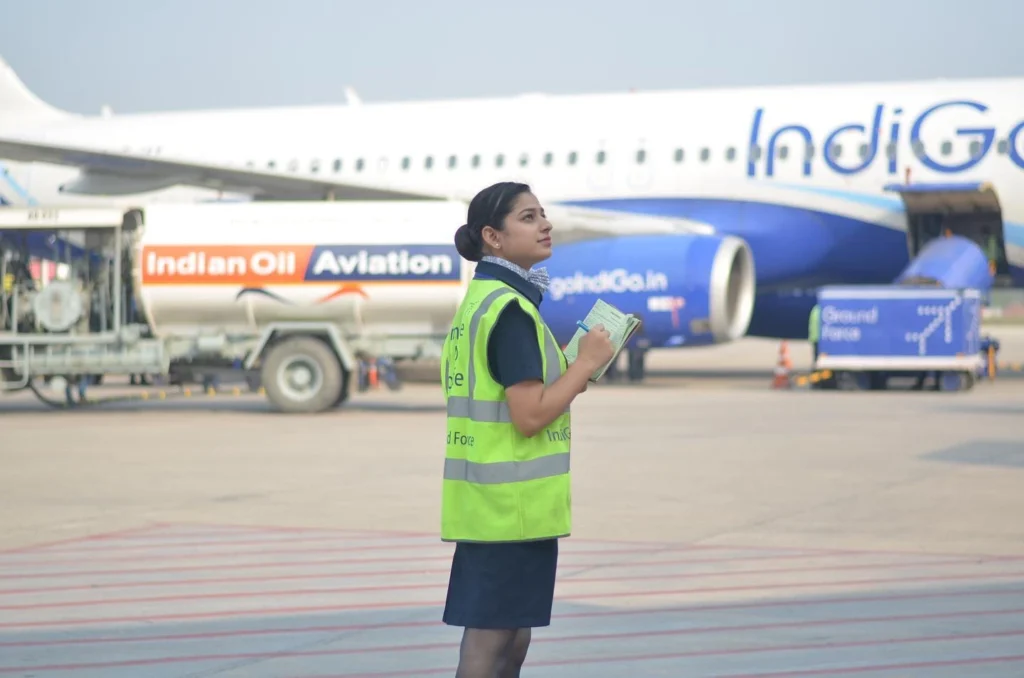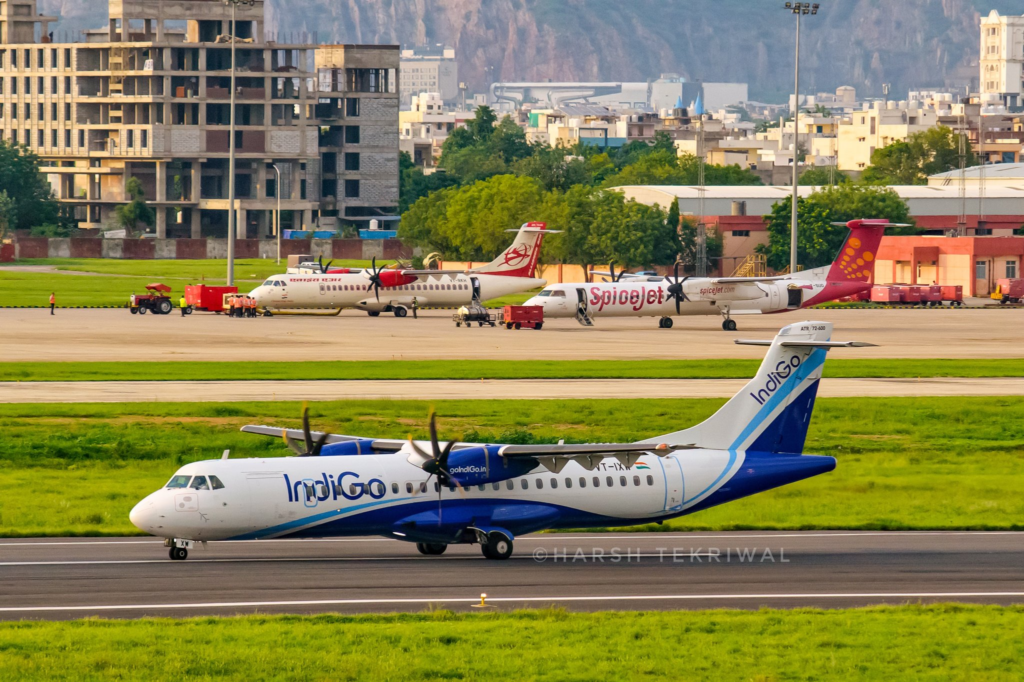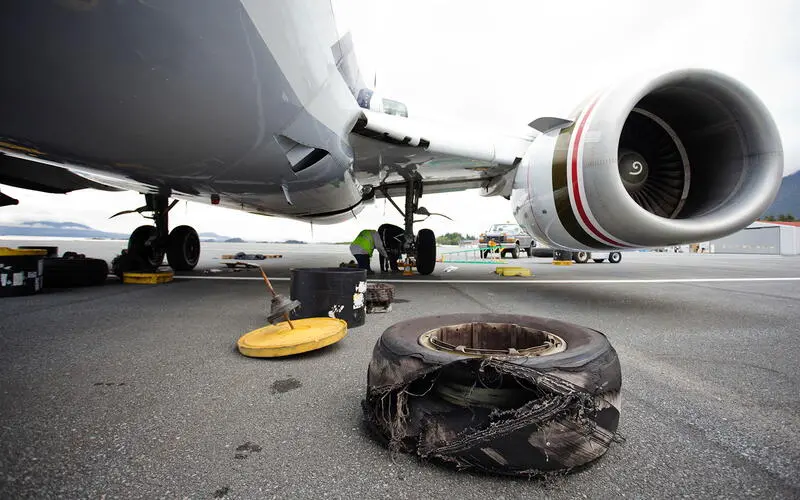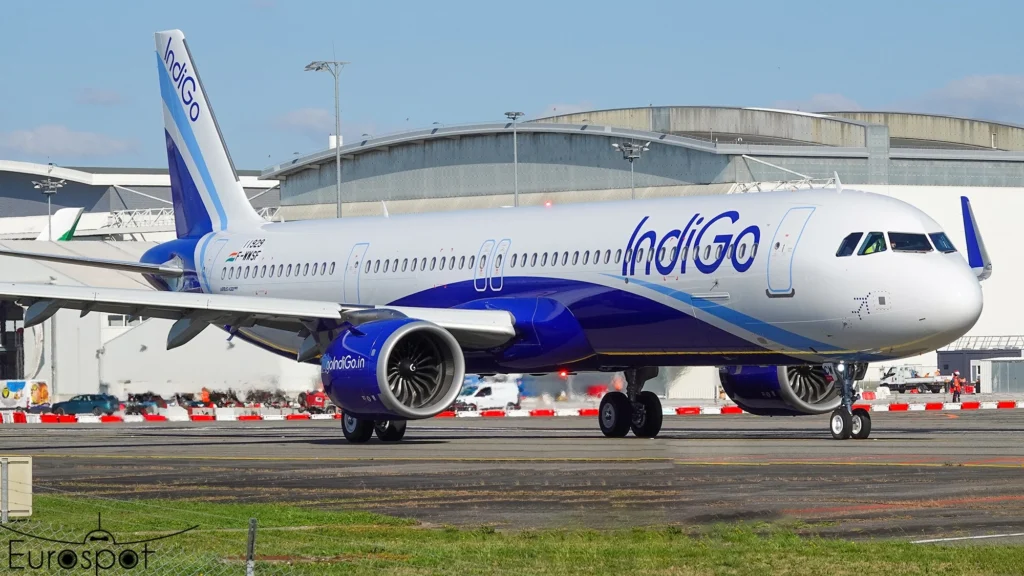
CHENNAI- An IndiGo (6E) flight scheduled to travel from Chennai (MAA) to Mumbai (BOM) encountered a tyre burst incident on Saturday, April 26, 2025, at Chennai International Airport (MAA).
The aircraft was subsequently returned to the bay for necessary maintenance procedures. Technical crews worked quickly to replace the damaged tyre, addressing the safety concern before departure clearance.
 Photo: avgeekwithlens/ Harsh Tekriwal
Photo: avgeekwithlens/ Harsh TekriwalIndiGo Tyre Burst
IndiGo (6E) Flight 6E5104 was scheduled to fly from Chennai (MAA) to Mumbai (BOM) when, at around 4:45 p.m. as the aircraft was leaving the bay area in preparation for departure. The pilot detected the deflated tyre and immediately alerted air traffic control about the situation.
Following standard safety protocols, a support team consisting of engineers and officials from the Airports Authority of India (AAI) promptly responded to the situation.
Ground teams swiftly guided the aircraft back to the maintenance bay, where technicians rapidly replaced the compromised tyre, resolving the safety issue before receiving clearance to resume the flight.
The aircraft involved in the incident is a Boeing 737 leased from Corendon Airlines and is registered as TC-COH.
After completing the required maintenance, the aircraft finally departed around 7:00 p.m., resulting in approximately a 2-hour delay for passengers. IndiGo (6E) released an official statement regarding the incident.
“The main wheel of flight 6E 5104 operating from Chennai to Mumbai was changed due to deflation before taxing out, the flight departed post necessary maintenance. We deeply regret the disruption and truly appreciate our passengers’ patience and understanding.”
IndiGo Statement
Aviation experts continue to emphasise the importance of thorough runway inspections and proper aircraft maintenance schedules, particularly tire pressure monitoring, to reduce the frequency of such events.
 Photo- IndiGo (Facebook)
Photo- IndiGo (Facebook)IndiGo Previous Tyre Burst Incidents
This recent incident adds to a series of similar occurrences involving IndiGo (6E) aircraft in recent years.
In May 2024, passengers on an Ahmedabad (AMD)-bound IndiGo (6E) flight from Bengaluru (BLR) experienced a concerning situation when their aircraft suffered a tyre burst during landing at Sardar Vallabhbhai Patel International Airport (AMD). That incident occurred at approximately 4:30 p.m. as the aircraft was taxiing toward the aerobridge after touchdown.
Going further back, in June 2021, an IndiGo ATR aircraft operating flight 6E7979 from Kannur (CNN) to Hubli (HBX) reported a tyre burst upon arrival at Hubli Airport (HBX). The airline confirmed all passengers and crew remained safe following the incident.
A more serious incident occurred in March 2018, when 72 passengers narrowly escaped potential disaster after a Hyderabad (HYD)-bound IndiGo (6E) flight experienced a tyre burst during landing at Rajiv Gandhi International Airport (HYD).
A passenger captured the aftermath on camera, with one traveller reportedly stating, “I am not boarding this plane again.” Despite the concerning nature of the incident, all passengers were safe.
 Photo: avgeekwithlens/ Harsh Tekriwal
Photo: avgeekwithlens/ Harsh TekriwalUnderstanding Aircraft Tyre Failures
Aircraft tyres regularly endure extreme operating conditions that test their structural integrity. These specialised components experience dramatic temperature fluctuations, from approximately -50°C at cruising altitudes to several hundred degrees Celsius upon landing. Additionally, they absorb significant shear forces during takeoff and landing procedures.
Improper tyre inflation presents a major risk factor that can intensify these inherent stresses, potentially leading to specific failure types such as shoulder separation and lower-sidewall compression breaks. Another common cause of tyre damage and blowouts involves Foreign Object Debris (FOD) on runways.
 Photo- Hydro Aero
Photo- Hydro AeroPilot Protocols for Tyre Burst Incidents
Commercial pilots follow established procedures when managing tyre burst incidents to maintain aircraft control and ensure passenger safety. The response varies depending on when the failure occurs during flight operations.
During takeoff scenarios at low speeds, pilots typically abort the takeoff process to thoroughly assess the situation and prevent potential cascading damage. Conversely, if a tyre burst occurs at higher speeds, particularly near or beyond V1 (the critical decision speed), pilots may elect to continue the takeoff procedure. Following this course of action, they then circle back to the departure airport for a comprehensive inspection of possible aircraft damage.
 Photo: Eurospot
Photo: EurospotTyre Bursts During Landing
When tyre failures happen during landing, pilots focus primarily on maintaining directional control while safely decelerating the aircraft. After bringing the plane to a complete stop, they coordinate with ground personnel to taxi the aircraft to a designated maintenance area for inspection and necessary repairs.
Throughout all tyre burst incidents, pilots maintain continuous communication with air traffic control and ground crews to effectively manage the situation, minimize operational disruptions, and uphold passenger safety as the paramount concern.
Stay tuned with us. Further, follow us on social media for the latest updates.
Join us on Telegram Group for the Latest Aviation Updates. Subsequently, follow us on Google News
IndiGo Bengaluru to Ahmedabad Flight Suffers Tyre Burst
The post IndiGo Chennai to Mumbai Flight with 737 Reports Tyre Burst appeared first on Aviation A2Z.















